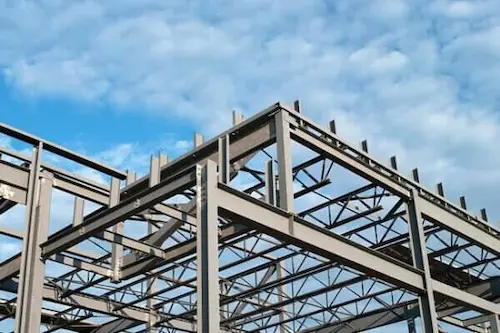The role of fire-resistant sheet metal in commercial reconstruction projects

In commercial reconstruction projects, ensuring fire safety is a top priority. Fire-resistant materials play a crucial role in mitigating risks, protecting occupants, and preserving the structural integrity of buildings.
Among these materials, fire-resistant sheet metal stands out as an essential component for enhancing fire safety and compliance with modern building codes.
This article explores the importance, benefits, and applications of fire-resistant sheet metal in commercial reconstruction projects.
Understanding Fire-Resistant Sheet Metal
Fire-resistant sheet metal is designed to withstand high temperatures and slow the spread of flames, smoke, and heat in the event of a fire. It is manufactured using materials that have inherent fire-resistant properties or are treated with fire-retardant coatings. Common fire-resistant metals used in construction include:
Stainless Steel: Highly resistant to corrosion and heat, making it ideal for fire-rated assemblies.
Galvanized Steel: Coated with zinc to enhance durability and fire resistance.
Aluminum: Used in certain fire-rated applications due to its lightweight and non-combustible properties.
Copper: Offers excellent fire resistance and durability in high-temperature environments.
Importance of Fire-Resistant Sheet Metal in Commercial Reconstruction
1. Compliance with Fire Safety RegulationsFire codes and safety regulations require commercial buildings to meet specific fire-resistance ratings to ensure occupant safety. Fire-resistant sheet metal helps reconstruction projects comply with the National Fire Protection Association (NFPA) codes, International Building Code (IBC), and other local fire safety standards. Using fire-rated materials minimizes liability and ensures adherence to legal requirements.
2. Enhanced Structural IntegrityIn the event of a fire, structural elements made from fire-resistant sheet metal help prevent the rapid collapse of a building. This is particularly crucial for critical load-bearing structures, HVAC ductwork, and support beams. By withstanding extreme temperatures, fire-resistant sheet metal ensures that the building remains intact for a longer period, allowing for safer evacuation and firefighting efforts.
3. Protection of Electrical and Mechanical SystemsCommercial buildings contain extensive electrical and mechanical systems that are susceptible to fire hazards. Fire-resistant sheet metal is commonly used in the fabrication of fire-rated enclosures, conduits, and ductwork. These elements protect wiring, ventilation systems, and plumbing from fire exposure, reducing the risk of electrical failures and secondary fire outbreaks.
4. Contribution to Fire Containment and CompartmentalizationFire-resistant sheet metal is used in fire-rated walls, ceilings, and doors to contain fires within specific areas of a building. This compartmentalization strategy helps slow the spread of flames, smoke, and toxic gases, providing critical time for evacuation and firefighting operations. Fire-rated sheet metal doors and panels are especially useful in commercial kitchens, manufacturing plants, and storage areas with flammable materials.
5. Durability and Low MaintenanceUnlike combustible materials, fire-resistant sheet metal does not degrade quickly under high heat conditions. It maintains its structural integrity and requires minimal maintenance over time. This makes it a cost-effective solution for commercial buildings that require long-lasting fire protection without frequent repairs or replacements.
Applications of Fire-Resistant Sheet Metal in Commercial Reconstruction
1. Fire-Rated Walls and CeilingsFire-resistant sheet metal is incorporated into walls and ceilings to create fire-rated barriers. These barriers help in preventing fire from spreading to adjacent rooms or floors, a critical feature in multi-story commercial buildings and industrial facilities.
2. HVAC Systems and Fire DampersHeating, ventilation, and air conditioning (HVAC) systems often serve as pathways for fire and smoke to spread. Fire-resistant sheet metal is used to manufacture ductwork and fire dampers that automatically close during a fire, restricting airflow and containing the flames within a designated area.
3. Fire-Rated Doors and WindowsFire-resistant sheet metal is widely used in fire-rated doors and windows to enhance building security and fire protection. These components prevent flames and smoke from moving between different sections of the building, reducing property damage and increasing the chances of occupant survival.
4. Elevator Shafts and StairwellsElevator shafts and stairwells are vital escape routes during a fire. Constructing these areas with fire-resistant sheet metal enhances their ability to withstand fire exposure and ensures that people can evacuate safely.
5. Storage Cabinets and EnclosuresCommercial facilities often require specialized storage for hazardous materials, such as chemicals and flammable liquids. Fire-resistant sheet metal is used in the fabrication of fire-rated storage cabinets and enclosures, providing an additional layer of protection against fire-related incidents.
Choosing the Right Fire-Resistant Sheet Metal for Reconstruction
When selecting fire-resistant sheet metal for a commercial reconstruction project, several factors should be considered:
Fire Rating Requirements: Determine the fire-resistance rating needed based on building codes and risk assessments.
Material Properties: Choose the right type of metal based on corrosion resistance, heat tolerance, and load-bearing capacity.
Coatings and Treatments: Opt for fire-retardant coatings or special alloys that enhance fire resistance.
Installation Techniques: Ensure proper installation by working with fire safety professionals and certified contractors to maximize the effectiveness of fire-resistant materials.
Fire-resistant sheet metal plays a vital role in enhancing fire safety in commercial reconstruction projects.
Its ability to withstand high temperatures, contain fire spread, and protect structural and mechanical components makes it an indispensable material in modern construction.
By integrating fire-resistant sheet metal into key building elements, commercial property owners and developers can ensure compliance with safety regulations, reduce fire hazards, and safeguard lives and assets.
